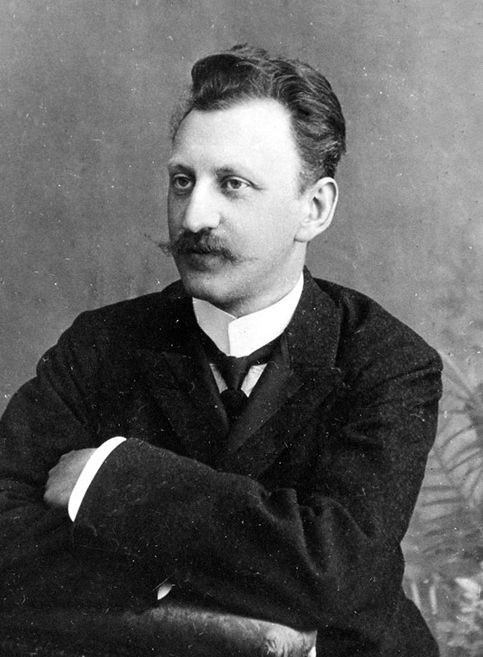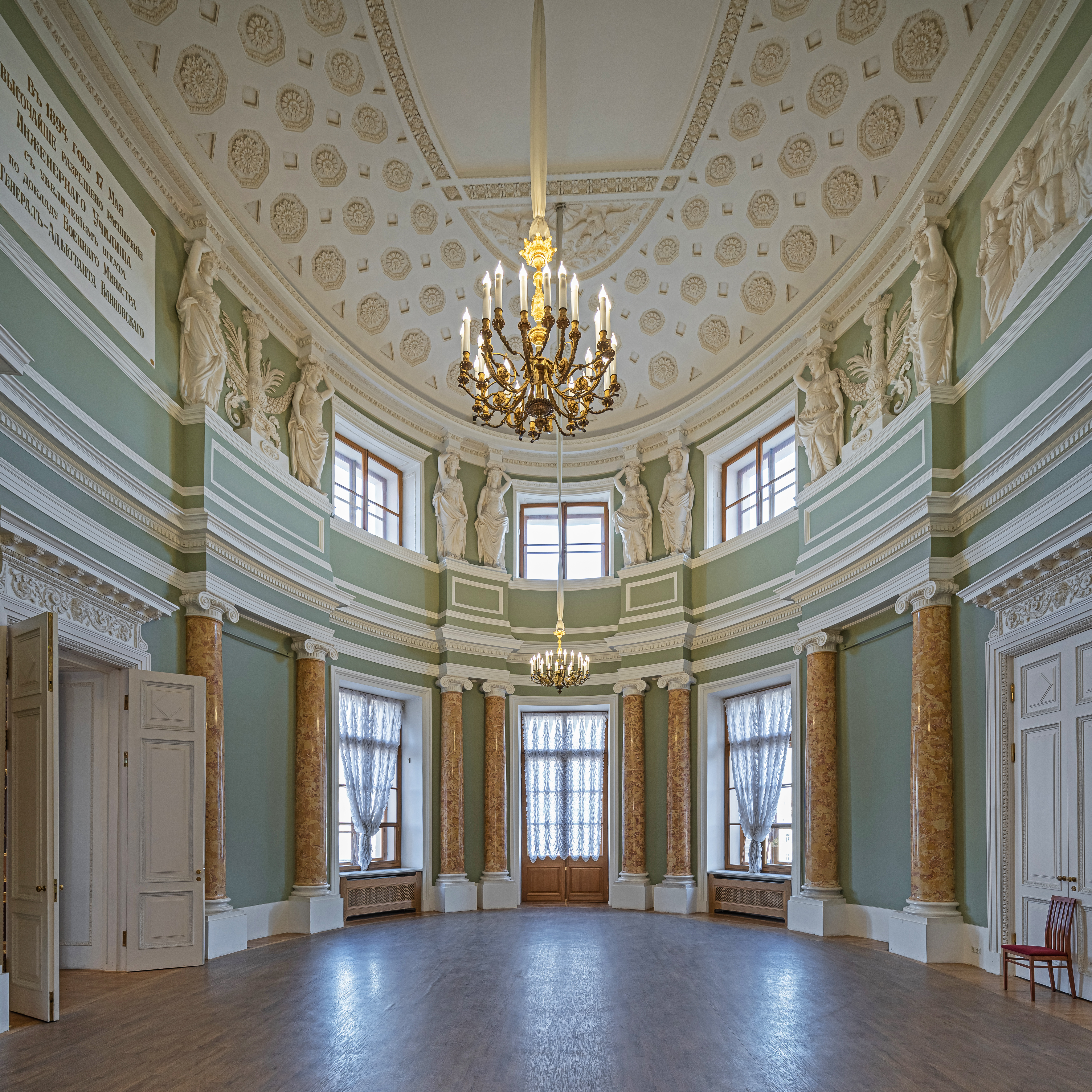|
Maxim Shubarev
Maxim Valerievich Shubarev (born May 25, 1968, Leningrad) is a Russian entrepreneur, chairman of the Board of Directors of the Setl Group holding, and vice president of the Self-Regulatory Organization "Association of Builders of St. Petersburg." Early life Shubarev was born in 1968 in Saint Petersburg. In 1985, Shubarev graduated from high school and enrolled in the Leningrad Institute of Aircraft Instrument Engineering in the evening department. He served in the Soviet Navy between 1986 and 1989. After completing his military service, he transferred to the Leningrad Polytechnic Institute and earned his degree in Economics and Management of Scientific Research and Design in 1993. Career In 1985, Shubarev began working at NPO as a radio equipment fitter. In 1994, he established the company Petersburg Real Estate and assumed the role of its general director. A year later, Shubarev established the first real estate division within a construction company. By the mid-2000s, the ... [...More Info...] [...Related Items...] OR: [Wikipedia] [Google] [Baidu] |
Leningrad
Saint Petersburg, formerly known as Petrograd and later Leningrad, is the List of cities and towns in Russia by population, second-largest city in Russia after Moscow. It is situated on the Neva, River Neva, at the head of the Gulf of Finland on the Baltic Sea. The city had a population of 5,601,911 residents as of 2021, with more than 6.4 million people living in the Saint Petersburg metropolitan area, metropolitan area. Saint Petersburg is the List of European cities by population within city limits, fourth-most populous city in Europe, the List of cities and towns around the Baltic Sea, most populous city on the Baltic Sea, and the world's List of northernmost items#Cities and settlements, northernmost city of more than 1 million residents. As the former capital of the Russian Empire, and a Ports of the Baltic Sea, historically strategic port, it is governed as a Federal cities of Russia, federal city. The city was founded by Tsar Peter the Great on 27 May 1703 on the s ... [...More Info...] [...Related Items...] OR: [Wikipedia] [Google] [Baidu] |
Saint Petersburg State University Of Aerospace Instrumentation
The Saint Petersburg State University of Aerospace Instrumentation () is a university with 13 faculties in Saint Petersburg, Russia. Faculties are devoted to innovation management, aerospace engineering, electronic engineering, energy development, computer science, telecommunication, humanities, military science, economics, jurisprudence and special faculties for distance education and recently acquired colleges. The University has several buildings and campuses, two of them located near to Chesme Church. Main building is located on the bank of the Moyka River, on the opposite bank of the river stands the building of Moika Palace. One campus of SUAI is situated in Ivangorod, near the border with Estonia. Faculties History In 1941 the institute was founded as the "Leningrad Institute of Aviation" (). In 1945 the institute was reorganized as the "Leningrad Institute of Aviation Instrumentation" (). In 1992 the Leningrad Institute of Aerospace Instrumentation passed the state ... [...More Info...] [...Related Items...] OR: [Wikipedia] [Google] [Baidu] |
Soviet Navy
The Soviet Navy was the naval warfare Military, uniform service branch of the Soviet Armed Forces. Often referred to as the Red Fleet, the Soviet Navy made up a large part of the Soviet Union's strategic planning in the event of a conflict with the opposing superpower, the United States, during the Cold War (1945–1991). The Soviet Navy played a large role during the Cold War, either confronting the North Atlantic Treaty Organization in western Europe or power projection to maintain its Warsaw Pact, sphere of influence in eastern Europe. The Soviet Navy was divided into four major fleets: the Soviet Northern Fleet, Northern, Pacific Fleet (Russia), Pacific, Black Sea Fleet, Black Sea, and Baltic Fleet, Baltic Fleets, in addition to the Leningrad Naval Base, which was commanded separately. It also had a smaller force, the Caspian Flotilla, which operated in the Caspian Sea and was followed by a larger fleet, the 5th Operational Squadron, 5th Squadron, in the Mediterranean Sea. The ... [...More Info...] [...Related Items...] OR: [Wikipedia] [Google] [Baidu] |
Leningrad Polytechnic Institute
Peter the Great St. Petersburg Polytechnic University, abbreviated as SPbPU, is a public technical university located in Saint Petersburg, Russia. Over the decades, it established itself as a cornerstone of technical education and research, ultimately becoming part of the informal “Big Five” — a prestigious group of the Soviet Union’s most elite engineering institutions. The university houses one of the country's most advanced research labs in hydro–aerodynamics. The university's alumni include Nobel Prize winners, such as Pyotr Kapitsa and Zhores Alferov, physicists and atomic weapon designers such as Yulii Khariton, Nikolay Dukhov, Abram Ioffe, Aleksandr Leipunskii, and Yakov Zeldovich, aircraft designers and aerospace engineers, such as Yulii Khariton, Oleg Antonov, Nikolai Polikarpov, and Georgy Beriev, and chess grandmasters, such as David Bronstein. The university offers academic programs at the Bachelor, Master's, and Doctorate degree levels. SPbSPU consi ... [...More Info...] [...Related Items...] OR: [Wikipedia] [Google] [Baidu] |
Holding Company
A holding company is a company whose primary business is holding a controlling interest in the Security (finance), securities of other companies. A holding company usually does not produce goods or services itself. Its purpose is to own Share capital, stock of other companies to create a corporate group. In some jurisdictions around the world, holding companies are called parent companies, which, besides holding Share capital, stock in other companies, can conduct trade and other business activities themselves. Holding companies reduce risk for the shareholders, and can permit the ownership and control of a number of different companies. ''The New York Times'' uses the term ''parent holding company''. Holding companies can be subsidiaries in a Subsidiary#Tiered subsidiaries, tiered structure. Holding companies are also created to hold assets such as intellectual property or trade secrets, that are protected from the operating company. That creates a smaller risk when it comes ... [...More Info...] [...Related Items...] OR: [Wikipedia] [Google] [Baidu] |
Too Big To Fail
"Too big to fail" (TBTF) is a theory in banking and finance that asserts that certain corporations, particularly financial institutions, are so large and so interconnected with an economy that their failure would be disastrous to the greater economic system, and therefore should be supported by government when they face potential failure. The colloquial term "too big to fail" was popularized by U.S. Congressman Stewart McKinney in a 1984 Congressional hearing, discussing the Federal Deposit Insurance Corporation's intervention with Continental Illinois. The term had previously been used occasionally in the press, and similar thinking had motivated earlier bank bailouts. The term emerged as prominent in public discourse following the 2008 financial crisis. Critics see the policy as counterproductive and that large banks or other institutions should be left to fail if their risk management is not effective. Some critics, such as economist Alan Greenspan, believe that such lar ... [...More Info...] [...Related Items...] OR: [Wikipedia] [Google] [Baidu] |
Konstantinovsky Palace
Constantine Palace (), also known as the Great Strelna Palace (), is a Russian imperial palace started in 1720 and located in Strelna in St. Petersburg. It is currently managed by the Directorate of the President of the Russian Federation. History The palace first began construction from the rule of Peter the Great. The palace and surrounding gardens were first completed in early 18th century, with expansions constructed until early 19th century. The estate was then passed down to Paul I, then later to Konstantin Pavlovich, which is the palace's namesake. This estate remained in the possession of the Russian imperial family until the Bolshevik Revolution in 1917. "Russian Versailles" As early as 1709, Peter the Great wanted to build a large imperial palace that would surpass the Palace of Versailles in France. On May 26, 1710, he "deigned to consider the plan for the location of the palace building, gardens and parks." The project, completed by the Italian architect ... [...More Info...] [...Related Items...] OR: [Wikipedia] [Google] [Baidu] |
Mikhailovsky Castle
Saint Michael's Castle (, ''Mikhailovsky zamok''), also called the Mikhailovsky Castle or the Engineers' Castle (, ''Inzhenerny zamok''), is a former royal residence in the historic centre of Saint Petersburg, Russia. Saint Michael's Castle was built as a residence for Emperor Paul I of Russia by architects Vincenzo Brenna and Vasily Bazhenov in 1797–1801. It was named for St Michael the Archangel, patron saint of the royal family. The castle looks different from each side, as the architects used motifs of various architectural styles such as French Classicism, Italian Renaissance and Gothic. Saint Michael's Castle was built to the south of the Summer Garden and replaced the small wooden palace of Empress Elizabeth Petrovna. Afraid of intrigues and assassination plots, Emperor Paul I disliked the Winter Palace where he never felt safe. Due to his personal fascination with medieval knights and his constant fear of assassination, the new royal residence was built like a ... [...More Info...] [...Related Items...] OR: [Wikipedia] [Google] [Baidu] |
Federal Antimonopoly Service
The Federal Antimonopoly Service of Russia (FAS) () is the federal-level executive governmental organ that controls the execution of the antitrust law and related areas. The FAS was established by President Vladimir Putin through Decree #314, which was issued on March 9, 2004. The agency was led from its inception in 2004 to 2020 by Igor Artemiev. He has since been replaced in this capacity by Maksim Shaskolsky, the former vice governor of Saint Petersburg. History The predecessor of the Federal Antimonopoly Service is the RSFSR State Committee on Antimonopoly Policy and Support for New Economic Structures, formed in accordance with the RSFSR Law of July 14, 1990 “On Republican Ministries and State Committees of the RSFSR”. Valery Chernogorodsky was appointed Chairman of the Committee. The staff of the apparatus was determined to be 150 units in accordance with the Provisional Regulation on the Civil Code of Russia was introduced, which was approved by Resolution of the ... [...More Info...] [...Related Items...] OR: [Wikipedia] [Google] [Baidu] |
Delovoy Peterburg
''Delovoy Peterburg'' () is a daily business newspaper published in Saint Petersburg, Russia. The paper has been in circulation since 1993. History and profile ''Delovoy Peterburg'' was started in 1993. Its headquarters is in Saint Petersburg and the paper provides business- and finance-related news about the city and the region. The paper is published in tabloid format. The owner of ''Delovoy Peterburg'' is Bonnier Group, and its publisher is Bonnier Business Press, ZAO, a subsidiary of the Bonnier Group. As of 2006 Andrey Ershov was the editor-in-chief. Maxim Vasjukov was appointed editor-in-chief on 8 December 2011. In 2011 ''Delovoy Peterburg'' was awarded by WAN/IFRA in the editorial category for its news service, namely DPVkontakte, within a social media site. In 2005 ''Delovoy Peterburg'' sold 23,000 copies. In 2010 the circulation of the daily rose to 24,000 copies. At the end of 2011 the paper had a circulation of 20,400 copies. See also * List of newspapers in Russi ... [...More Info...] [...Related Items...] OR: [Wikipedia] [Google] [Baidu] |



